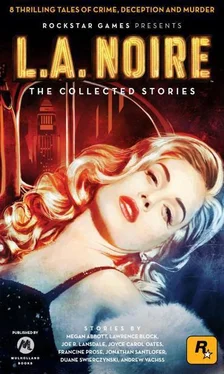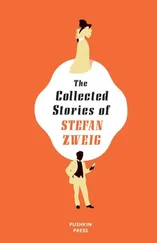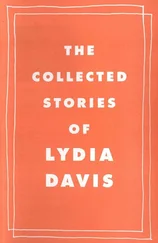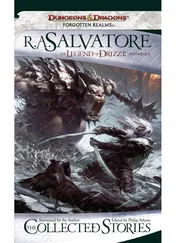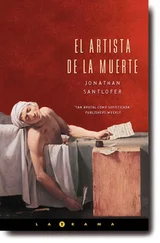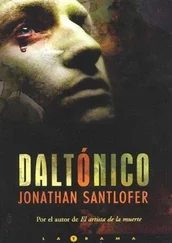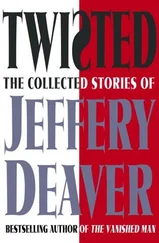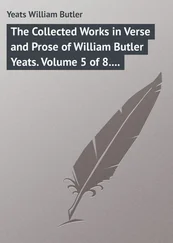ROCKSTAR GAMES PRESENTS
L.A. NOIRE
The Collected Stories
Edited by
Jonathan Santlofer
INTRODUCTION BY CHARLES ARDAI
EDITED BY JONATHAN SANTLOFER
STORY ONE:THE GIRL
by Megan Abbott
Megan Abbott, whose work has often dealt with real-life noir stories, lures the reader—and L.A. Noire character erstwhile actress June Ballard—into the depraved goings-on at an infamous Hollywood party.
STORY TWO:SEE THE WOMAN
by Lawrence Block
Award-winning author Lawrence Block delivers a poignant and painful look at domestic abuse and its harrowing after-math as a retired L.A. cop recounts the story that has haunted and colored his life.
STORY THREE:NAKED ANGEL
by Joe R. Lansdale
In this story of love, betrayal, and murder, Joe R. Lansdale creates a vivid protagonist who confronts an ugly truth in his past to solve a crime in the present before L.A. Noire homicide detective Rusty Galloway even has a lead.
STORY FOUR:BLACK DAHLIA & WHITE ROSE
by Joyce Carol Oates
One of the most esteemed writers of our time, Joyce Carol Oates has often blended fact and fiction—the incident at Chappaquiddick in her novel Black Water , the murder of JonBenét Ramsey in her novel My Sister, My Love —and does so once again in this brilliant reimagining of the Black Dahlia murder case and the young Marilyn Monroe (Norma Jeane Baker), a story sure to haunt readers for a long time.
STORY FIVE:SCHOOL FOR MURDER
by Francine Prose
Distinguished writer of bestselling fiction and nonfiction Francine Prose goes full throttle in her darkly humorous take on Hollywood, the making of noir films, and acting that goes far beyond the Method.
STORY SIX:WHAT’S IN A NAME?
by Jonathan Santlofer
Well-known artist and award-winning writer Jonathan Santlofer, who has often explored the dark psychological makeup of criminals and sociopaths, here crafts a tale of murder and identity that is both heartbreaking and terrifying.
STORY SEVEN:HELL OF AN AFFAIR
by Duane Swierczynski
Duane Swierczynski reveals the dizzying spiral of duplicity that drives L.A. Noire character William Shelton into a headlong collision with the wrong side of the law.
STORY EIGHT:POSTWAR BOOM
by Andrew Vachss
Andrew Vachss, an attorney specializing in child protection, always takes on important and disturbing social issues in his work—whether in fiction or in real life. Here is a pointed, painful look at the bitter racism, shaped by prejudice and combat, that fuels a couple of postwar hit men.
About the Authors
About L.A. Noire
New from the authors of L.A. Noire: The Collected Stories
Copyright
Copyright Acknowledgments
Introduction
Charles Ardai
On the infrequent occasions that I make it out to L.A., to work on the cop show I have a hand in, I always make time to have dinner at Musso & Frank. They’ve been serving the same menu since 1919, the same steaks and chops, the same sauerbraten and lobster thermidor. The seats at the counter in front of the grill have the same buffed leather upholstery, and if you lean in close you can see rings on the bar left behind from Raymond Chandler’s shot glass.
They say he wrote parts of The Big Sleep here, maybe all of it. They say Jim Thompson, author of The Killer Inside Me, often drank himself into a stupor here and had to be helped home. Charles Bukowski, too, and F. Scott Fitzgerald—writers of all stripes used to pickle themselves here. But because of Chandler and Thompson, and because of the look and feel of the place (it could be a set from Chinatown; it was, in fact, a set in Ocean’s Eleven ), it’s got a special spot in the hearts of writers and readers of crime fiction. And not just crime fiction—the particular sort of crime fiction we call noir.
You might wonder why a crime writer living in New York would have to fly across the continent to Los Angeles to have a proper noir experience. It’s the same reason that the folks at Team Bondi and Rockstar Games decided to recreate L.A. inside a computer to give gamers the ultimate noir (or noire, if you prefer) environment to explore. If you want a proper Western experience, you go to Tombstone, Arizona; for romance, you go to Venice or Rome. For noir, you go to L.A. Ironic, I suppose, given how strongly California is associated with brightness and sunshine; even more ironic given how synonymous Hollywood is with happy endings (if you say that a movie has a “Hollywood ending,” you mean pretty much the opposite of what goes on in a film noir). But facts are facts, and for generations of readers and writers and filmmakers, L.A. is noir central.
I don’t think this is in spite of Hollywood’s sunny associations—I think it’s because of them. Nowhere on earth do you get to witness more clearly the collision between fantasy and reality than in L.A., the clash between the dreams being spun for the cameras at twenty-four frames per second or enjoyed by stars in the mansions of the Hollywood Hills and the dire existence being lived by the other 99.9 percent of the population, the one doomed never to make it to the Technicolor side of the rainbow.
Musso & Frank is located right on Hollywood Boulevard, a street that is literally paved with stars—you don’t get more dreamlike than that. But the last time I walked that stretch of pavement after the sun went down, I saw a young man in handcuffs being jammed into the back of a police car; then I was approached by another man walking along with his hands in his coat pockets muttering hopefully, “Medical marijuana… Medical marijuana…” Darkness and light. Pawnshops and drug clinics and tranny hookers plying their trade on the same boulevards on which chauffeur-driven Bentleys and Maybachs ferry studio executives working out hundred-million-dollar deals in the backseat. Would-be screenwriters and actors and makeup artists living on Craigslist gigs and ramen look up each night and see the Hollywood sign staring down at them from the mountains—so bright and clean and hopeful and impossibly far away. Yes, every major city has slums, has desperate people living desperate lives—but only in L.A. do the slums come with a view of Shangri-la.
L.A. Noire: the stories.
When Rockstar Games set out to create a classic noir experience, they realized that there were two equally important elements that had to be present: the look and feel, which had to immediately conjure up the unforgettable sights and sounds of the great noir films of the 1940s and ‘50s (and their neo-noir cousins from the 1970s and beyond), and the storytelling. Focus only on the sights and sounds and you have an empty shell, a pastiche. Anyone can put stick figures in trench coats and fedoras, slap some saxophones on the sound track, and call it noir. What makes genuine noir is not just the atmosphere but the stories—heartrending tales about people facing terrible situations and, all too often, not surviving.
And what better lens through which to view these stories than the eyes of a cop? The characters involved in any particular crime get to see only the events of that one story—a cop gets to see them all. So L.A. Noire puts you into the shoes of Cole Phelps, an ex-marine now working for the LAPD, a more or less clean cop in a more or less clean department with the good or bad fortune (you decide) of having worked his way up to the homicide desk during one of the most notorious years in LAPD history: 1947. That was the year that opened with the discovery in a city park of the mutilated body of Elizabeth Short, nicknamed the Black Dahlia by the newspapers; and as the year wound on, other women, one after another, were found murdered in gruesome and sadistic fashion—this one strangled with a stocking, that one beaten to death with a claw hammer, yet another found with obscenities scrawled on her corpse in lipstick. Arrests were made in some cases, but the Dahlia’s killer was never caught. And the problem is… who knows how many of the other murders the killer was responsible for? In some cases, it’s possible that not only did the guilty party not go to jail, an innocent man went in his place.
Читать дальше
